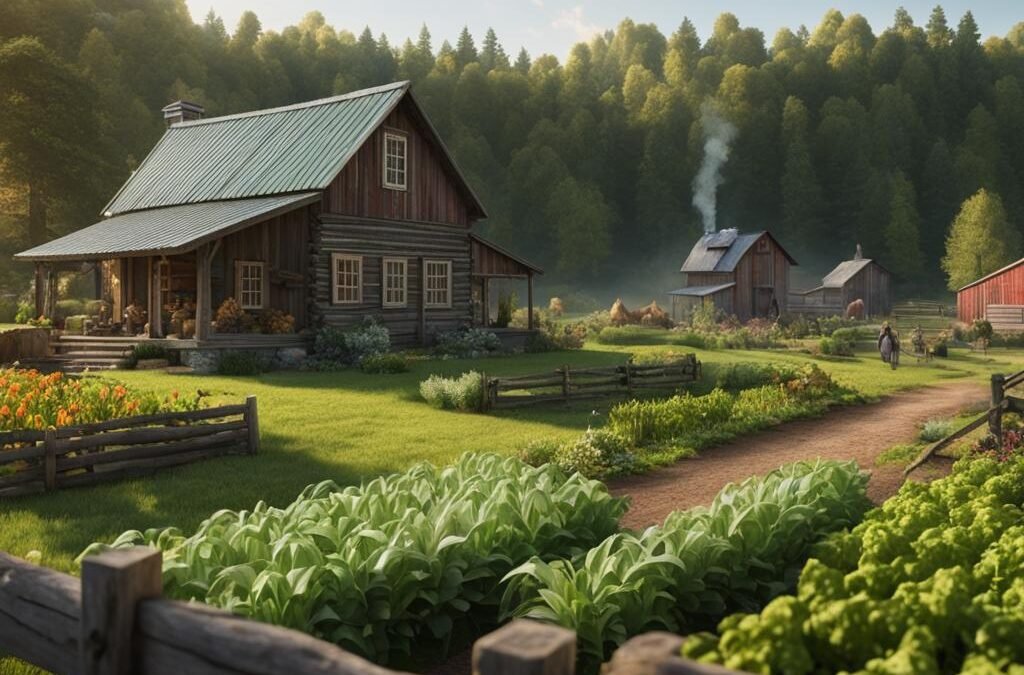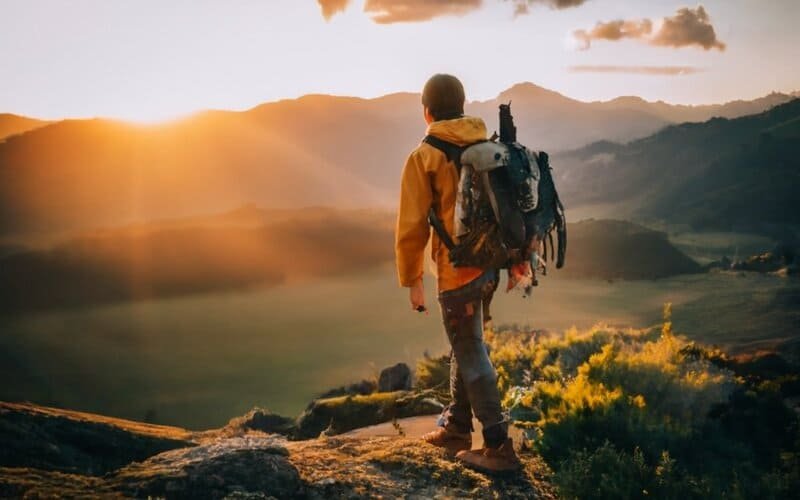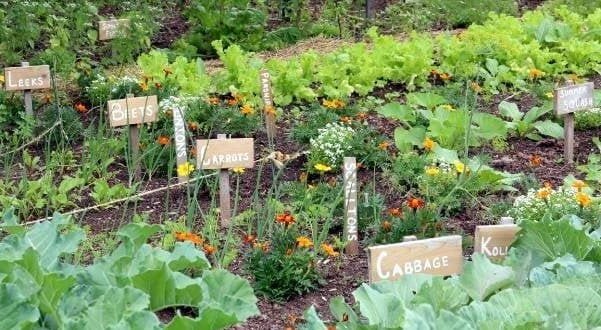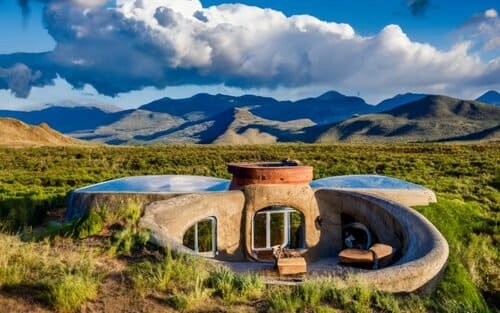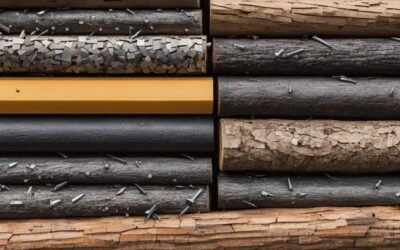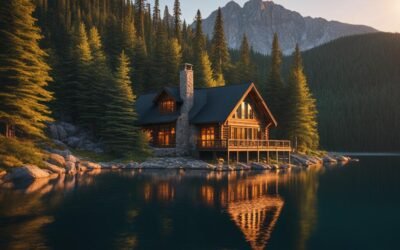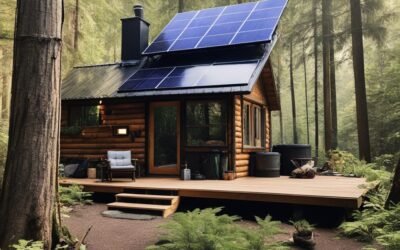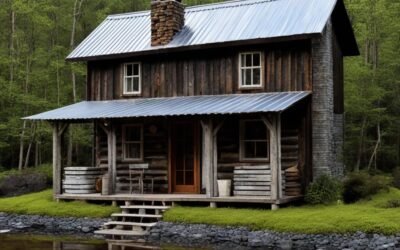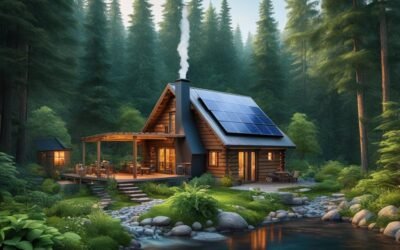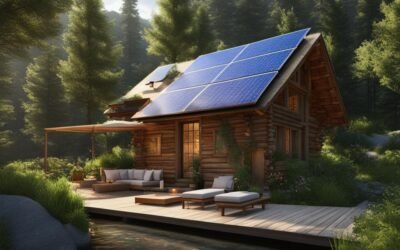Embarking on a life of sustainable living and self-reliance began for me a decade ago, with a vision that took shape on a modest 2-acre plot of land. That vision has blossomed into a vibrant self sufficient homestead, replete with an abundant garden, a barn that brims with life, and a sanctuary I’ve made from a cozy cabin. It’s more than a location; it’s the physical manifestation of my homesteading journey. This evolution from wilderness to a self-sustaining haven didn’t happen overnight; it emerged from diligent planning, embracing organic practices, and adopting off-grid living essentials, powered by renewable energy and anchored in permaculture design. Savoring every step—from planting seeds to building with reclaimed materials—has taught me that the essence of homesteading lies not just in the yield but in the joy of the process itself.
Key Takeaways
- Starting a self sufficient homestead is a journey of commitment and joy in sustainable living.
- A thorough plan and embracing organic practices are fundamental to a thriving homestead.
- Renewable energy solutions are key to maintaining an off-grid lifestyle.
- Permaculture design principles guide in cultivating a harmonious, self-reliant ecosystem.
- The homesteading process itself is as rewarding as the outcomes it produces.
Understanding the Homesteading Lifestyle
My homesteading journey unveils a world where self-reliance, natural building, and food preservation are not just practices but pillars of a self-sustaining ethos. The lifestyle captivates those who seek to join hands with Earth’s rhythm, producing not only sustenance but also a sense of complete autonomy. It was this seeking of purpose and deeper connection to nature that drew me to homesteading.
Defining Self Sufficient Homesteading
Self-sufficient homesteading is a profound commitment to independence. It’s about creating a life that depends less on society’s supply chains and more on personal skill and land’s bounty. It emphasizes hands-on learning, from cultivating gardens to constructing shelter, generating energy to crafting clothes.
Homesteading in Urban vs Rural Settings
Whether I’m sowing seeds in the heart of the city or tending to my livestock on sprawling acres, the essence of homesteading transcends the urban-rural divide. Each setting offers unique challenges and rewards, but the core principles of self-sufficiency adapt fluidly between skyscrapers and open skies.
The Shift to Sustainable Living Choices
The transition to homesteading is transformative, urging a shift in daily habits in favor of more sustainable living choices. Over time, this way of life has realigned my interaction with resources, reshaping consumption patterns and fostering a genuine respect for the delicate balance of our ecosystems.
| Element of Homesteading | Urban Setting | Rural Setting |
|---|---|---|
| Space for Gardening | Vertical and container gardens | Expansive outdoor plots |
| Livestock Management | Smaller scale, possibly indoors | Ample space for free-range grazing |
| Energy Solutions | Solar panels on rooftops | Solar farms, wind turbines |
| Food Preservation | Adaptability to smaller kitchens | Large pantries and root cellars |
Embarking on My Journey to Self Sufficiency
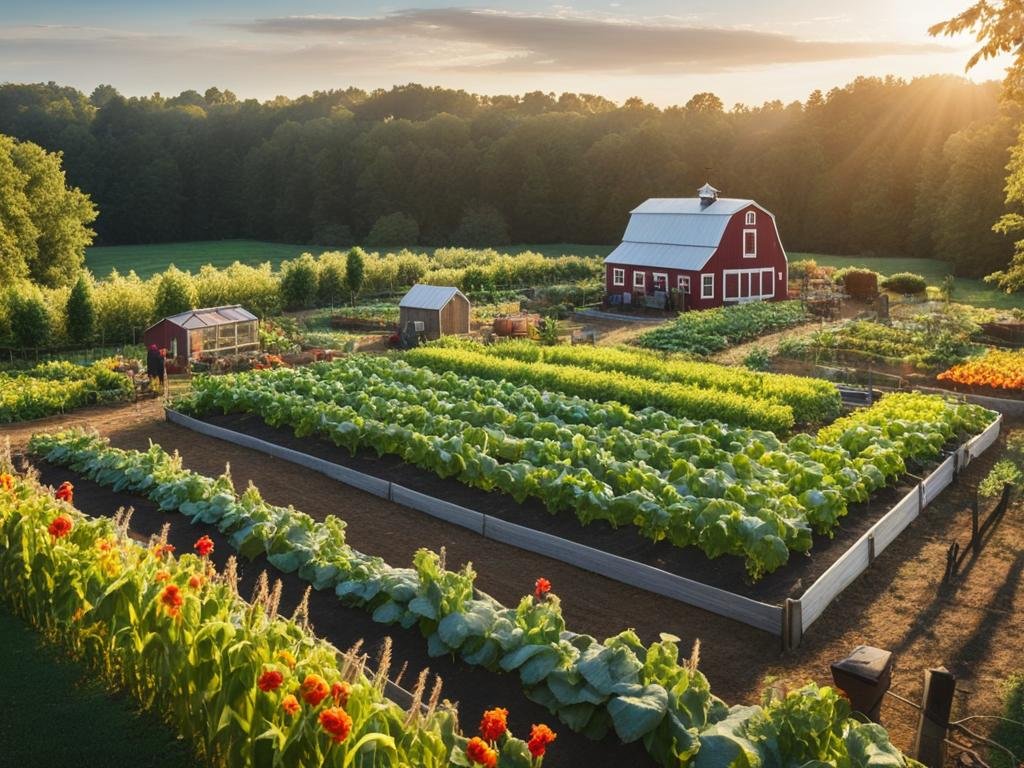 Aspirations of off-grid living and sustainable living catalyzed my decision to pursue a self-sufficient lifestyle. It was more than just a choice; it was the inception of a transformative journey, deeply rooted in my passion for gardening, cooking, and various DIY endeavors. I had a vivid vision: creating a homestead where my food comes straight from the ground it’s grown on, where every structure upholds the values of eco-consciousness and where each day spent is an echo of sustainable principles.
Aspirations of off-grid living and sustainable living catalyzed my decision to pursue a self-sufficient lifestyle. It was more than just a choice; it was the inception of a transformative journey, deeply rooted in my passion for gardening, cooking, and various DIY endeavors. I had a vivid vision: creating a homestead where my food comes straight from the ground it’s grown on, where every structure upholds the values of eco-consciousness and where each day spent is an echo of sustainable principles.
The path to self-sufficiency is one filled with trial and error—a pilgrimage of patience, where each success and misstep is savored equally. With methodical steps and an unwavering goal of minimal reliance on the grid, my homestead blossomed from an aspiration into a tangible sanctuary. Along this journey, I made it a priority to stay true to a zero-debt philosophy, ensuring that my venture into homesteading would be as stress-free as possible, allowing joy to flourish amidst the fields and forests of my crafting.
In documenting my transition to this authentic way of life, I took the time to pen down some of the milestones that were instrumental in shaping my homestead. This reflection has allowed me to chart both the tangible and intangible yields of my labor.
| Homesteading Milestone | Skills and Outcomes |
|---|---|
| Initial Garden Planting | Understanding soil health, crop rotation, and organic pest control |
| First Harvest | Learning to preserve and store food sustainably |
| Renewable Energy Setup | Installation and maintenance of solar panels, experiencing energy autonomy |
| DIY Building Projects | Using reclaimed materials to build chicken coops and storage sheds |
| Financial Management | Adopting a zero-debt strategy to invest in my homestead’s future growth |
These signposts marked on my homesteading map not only denote the progress I’ve made but also serve as a testament to the resilience and resourcefulness that a life of self-sufficiency demands. Each project completed and lesson learned fortifies the conviction that this lifestyle is a blueprint for personal fulfillment and ecological harmony.
Self Sufficient Homestead: Cultivating My Land and Resources
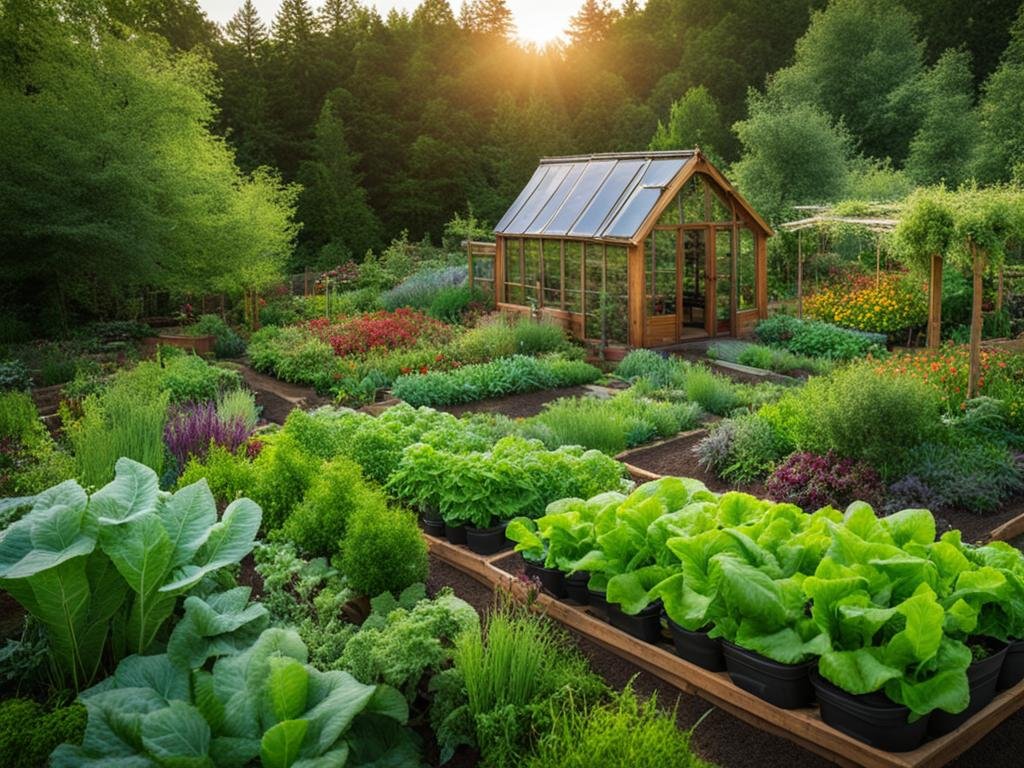 Embarking on a journey to create a self-sufficient homestead has unveiled the harmonious blend of nature and innovation right in my backyard. The essence of this lifestyle is the synergy between organic gardening, renewable energy, and the holistic approach of permaculture.
Embarking on a journey to create a self-sufficient homestead has unveiled the harmonious blend of nature and innovation right in my backyard. The essence of this lifestyle is the synergy between organic gardening, renewable energy, and the holistic approach of permaculture.
Starting with Organic Gardening
My transition to sustainable living commenced with my hands in the soil, cultivating a bounteous organic garden. This garden more than just a source of fresh produce; it’s a living laboratory where I experiment with crop rotations, companion planting, and natural pest control, all while fostering soil integrity.
| Vegetable | Planting Season | Harvest Season | Companion Plants |
|---|---|---|---|
| Tomatoes | Spring | Summer | Basil, Marigolds |
| Kale | Fall | Winter | Garlic, Dill |
| Cucumbers | Summer | Summer-Fall | Sunflowers, Peas |
Implementing Renewable Energy Solutions
Equally crucial is my commitment to renewable energy. Off-grid living is not mere aspiration but a reality achieved through the integration of solar panels and wind turbines, ensuring a steady supply of clean energy, and setting a standard in environmental responsibility for a self-sufficient homestead.
Designing a Homestead with Permaculture Principles
At the core of my land’s cultivation stands permaculture. It goes beyond gardening; it is designing sustainable systems that mimic nature, creating ecosystems that conserve resources—a celebration of biodiversity that sustains not just the crops, but the soul.
- Water retention landscapes
- Edible forest gardens
- Natural habitat building
I cherish the rhythm of this land, where every element plays its role in the orchestra of my self-sufficient homestead, demonstrating that living in harmony with the environment isn’t just possible—it’s deeply fulfilling.
Building the Foundation of My Homestead
Embarking on an adventure to establish my homestead, I recognized that its success hinged on a sturdy foundation. The process required a careful analysis of several critical factors to ensure the sustainability and resilience of my chosen lifestyle.
Choosing the Right Location for Sustainability
My search for the perfect sustainable location began with evaluating the environmental aspects of potential lands. The aim was to find a combination of natural beauty and practicality—a place where the philosophy of off-grid living could flourish. I sought out land that offered safety from natural calamities, ample water resources for both drinking and irrigation, and a supportive community culture that valued food preservation techniques and shared my enthusiasm for a sustainable lifestyle.
Natural Building Techniques for Durable Structures
With the location secured, my attention turned to constructing edifices using natural building methods. By leveraging materials such as earth, stone, and wood sourced from local environments, not only did I reduce the homestead’s carbon footprint, but I also created structures that harmonized with the surrounding ecosystem. From the cob walls of the root cellar to the straw-bale insulation of my workshop, each element was not only a testament to durability but also an echo of nature’s resilience.
Creating a Budget that Aligns with My Values
Financial mindfulness was essential in maintaining my self-sufficiency. I created a budget that mirrored my values, emphasizing frugality, efficiency, and investment in renewable energy. This budget accounted for every penny—from the cost of land acquisition to ongoing maintenance and improvements. By doing so, I avoided debt, ensuring that my homestead was as economically sustainable as it was environmentally.
| Expense Category | Initial Cost | Ongoing Cost | Notes |
|---|---|---|---|
| Land Purchase | $50,000 | N/A | Central to sustainable location principles |
| Renewable Energy Systems | $20,000 | $200/year | Solar and wind power investments |
| Natural Building Materials | $10,000 | Varies | For repairs and expansions |
| Water Systems | $5,000 | $100/year | Includes a well and rainwater catchment |
| Gardening Start-up | $3,000 | $500/year | Soil preparation, seeds, and tools |
In each step, from navigating the nuances of off-grid living to advancing green building techniques, the foundation of my homestead remains ever strong, tethered to the earth and my enthusiasm for a self-reliant future.
The Heart of Homesteading: Food Preservation and Livestock
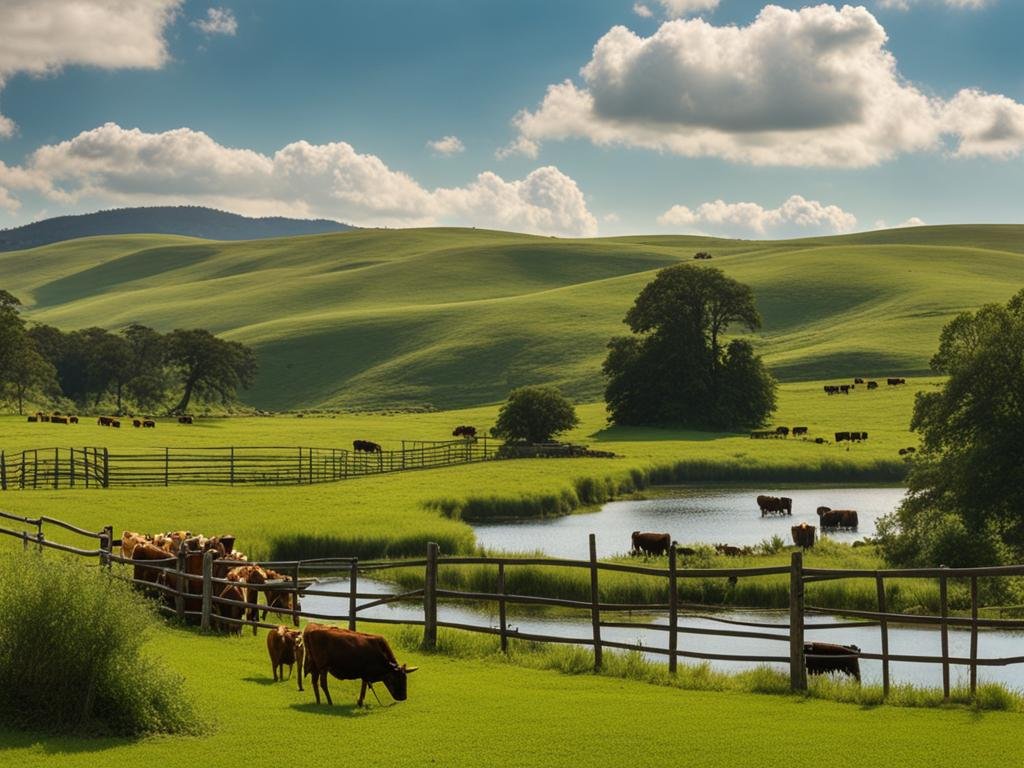 As I delve deeper into the homesteading lifestyle, I cherish the rhythm of preserving the organic produce grown with love on my land. Beyond the rustic charm and hard work, it’s this rich tapestry of skills—rooted in food preservation and nurturing self-sustaining livestock—that defines the essence of my daily life.
As I delve deeper into the homesteading lifestyle, I cherish the rhythm of preserving the organic produce grown with love on my land. Beyond the rustic charm and hard work, it’s this rich tapestry of skills—rooted in food preservation and nurturing self-sustaining livestock—that defines the essence of my daily life.
Let me walk you through a typical day: the morning is marked by the crow of a rooster as I head out to collect a basket of eggs. These little parcels of nourishment are a testament to the circular bounty that self-sustaining livestock provide. Amidst the soft clucking of hens and the gentle moo of cows, my connection to the land deepens, making every meal a reflection of the soil’s generosity.
Afternoons often find me in the kitchen or the root cellar, where jars of preserved fruits and vegetables line the shelves—a kaleidoscope of colors and a testament to seasonal eating. Through canning, I capture the peak flavors of summer’s tomatoes and autumn’s apples, ensuring that no part of my harvest goes to waste. This art of food preservation is a dance with time itself, a way to savor each season and greet the coming months with a pantry full of plenty.
Self-Sustaining Livestock Management:
- Grain-Free Feeding Techniques
- Natural Herd Health Maintenance
- Pasture Rotation and Land Management
With the stability of these practices, my journey moves beyond mere self-sufficiency—it’s about a life built on resilience, awareness, and the harmony of the cycles of nature. This is where the individual moments of planting seeds and tending animals weave into the greater narrative of a fulfilling and sustainable existence.
| Preservation Method | Produce Type | Shelf Life |
|---|---|---|
| Canning | Vegetables, Fruits, Sauces | 1-5 Years |
| Drying | Herbs, Fruits, Jerky | 6 Months – 1 Year |
| Freezing | Meat, Berries, Prepared Dishes | 3-12 Months |
| Fermenting | Pickles, Kombucha, Sauerkraut | Months to Years |
Here, beneath the wide sky, my homestead pulses with life. Every jar of jam, every loaf of bread, and every meal shared is an ode to the land and the creatures that furnish it. As the sun sets, painting the sky in hues of fire and gold, the earnest charm of this homesteading lifestyle reaffirms itself—a serene tapestry, threading self-reliance into every fiber of my being.
Evolving My Homestead with Advanced Self-Reliance Skills
 As my homesteading adventure unfolds, delving deeper into self-reliance skills has become a cornerstone of my sustainable living ethos. The mastery of composting has turned my kitchen scraps and yard waste into a powerhouse of nutrition for my gardens, embodying the cycle of life and its restorative powers. Learning and striving to perfect these skills not only nurtures my land but also deepens my personal growth within this earth-conscious lifestyle.
As my homesteading adventure unfolds, delving deeper into self-reliance skills has become a cornerstone of my sustainable living ethos. The mastery of composting has turned my kitchen scraps and yard waste into a powerhouse of nutrition for my gardens, embodying the cycle of life and its restorative powers. Learning and striving to perfect these skills not only nurtures my land but also deepens my personal growth within this earth-conscious lifestyle.
Mastering the Art of Composting
Embracing composting is not merely about waste reduction—it’s about understanding and facilitating the biology of decay and renewal. My carefully curated compost piles become miniature ecosystems, where organic materials break down and eventually return to the soil as valuable amendments, enhancing its structure and fertility. This practice underscores my dedication to a closed-loop system, minimizing my homestead’s ecological footprint.
Exploring Food Forestry and Biodiversity
The concept of food forestry takes my commitment to biodiversity to new heights. I intertwine layers of vegetation, mimicking natural forests, to create a resilient and self-sustaining source of nutrition. Each plant plays a vital role in this edible landscape, attracting beneficial insects, providing habitat for wildlife, and contributing to a robust, biodiverse ecosystem on my land.
Educational Resources for Continuous Learning
Continuous learning and innovation are integral to the evolution of my homestead. I turn to a wealth of educational homesteading resources, from books and online courses to workshops and local community exchanges, ensuring that I stay informed and inspired. These resources are like threads in the fabric of my journey, weaving knowledge and experience into a tapestry of sustainable living.
| Activity | Benefits | Resources Used |
|---|---|---|
| Hot Composting | Accelerated decomposition, quick turnaround | Composting guidebooks, local workshops |
| Establishing Food Forests | Perennial food sources, increased ecosystem services | Permaculture design texts, online forums |
| Promoting Biodiversity | Resilience to pests and diseases, habitat creation | Biodiversity field guides, native plant societies |
My homestead is a living laboratory where theory meets practice. As I advance along this path, the knowledge I gain propels me towards greater self-reliance and a more profound appreciation for our planet’s intricate systems.
Conclusion
As I reflect upon my sustainable living journey, I’m filled with a sense of accomplishment and fulfillment. My homesteading path has been paved with tireless efforts towards a self sufficient homestead, a testament to the resilience and dedication required to live in harmony with nature. The early days of defining and understanding the breadth of homesteading culminated into the rich experiences of organic gardening, harnessing renewable energy, and naturally building a life conducive to sustainable values.
The implementation of permaculture principles has not only revolutionized the way I interact with my environment but has also deepened my respect for the intricate systems of our ecosystem. Moreover, the practical applications of organic gardening have brought me closer to the earth, allowing me to nourish myself and my family with food that is both nutritious and ethically produced. These practices are at the heart of what it means to be a homesteader, and they form the core principles by which I live my life.
In sharing my story, I aim to inspire a new wave of homesteaders who are eager to embark on their own paths towards self-reliance. The empowering feeling of growing your own food, building your shelter, and living responsibly cannot be understated. Through my experiences, I hope to encourage more individuals to consider a lifestyle that promotes sustainability, care for the environment, and a profound understanding of the natural world. May you find as much joy and purpose in your homesteading endeavors as I have in mine.
FAQ
What inspired you to begin your self sufficient homestead journey?
It was a blend of my love for sustainable living, a passion for gardening and cooking, and a desire to live a life rooted in self-reliance that inspired me to embark on creating my self-sufficient homestead.
How do you define self sufficient homesteading?
Self sufficient homesteading is a lifestyle focused on achieving self-reliance by producing your own food, managing waste, utilizing renewable energy, and living in harmony with the land.
Can homesteading be done in urban settings or is it just for rural areas?
Absolutely, homesteading can be adapted to urban settings—often called urban homesteading. It involves applying the principles of self-sufficiency, like gardening, preserving food, and reducing waste, within the confines of a more metropolitan environment.
What kind of shift in living choices is needed for sustainable homesteading?
One must be willing to reduce their environmental footprint by making sustainable living choices, which can include anything from planting an organic garden, to implementing renewable energy solutions, and even using natural building techniques for creating structures.
How did organic gardening become a pivotal part of your homestead?
Organic gardening was fundamental to my homestead as it provided us with a secure source of fresh, chemical-free food while also respecting and enriching the surrounding environment.
What renewable energy solutions have you implemented in your homestead?
I’ve incorporated solar panels and wind turbines to provide for our electricity needs, which not only powers our homestead but also reduces our reliance on conventional energy sources.
How have permaculture principles influenced the design of your homestead?
The permaculture principles have guided us to create systems that work in symbiosis with nature. This means considering the land’s natural patterns, conserving resources, and promoting biodiversity in our gardening practices.
What was important when choosing the location for your homestead?
Critical factors included ensuring the land was safe from natural hazards, access to clean water, a supportive community culture, and being in reasonable reach of necessary services.
Can you share some of the natural building techniques you used on your homestead?
I used straw bale and cob construction for buildings, which are sustainable methods that utilize locally sourced materials, have great insulation properties, and minimize environmental impact.
How did you create a budget that aligns with your values of sustainability and self sufficiency?
My budget prioritizes long-term investment in quality tools and materials, minimizes unnecessary expenses, and ensures that ongoing costs are manageable through sustainable practices like growing our food and using renewable energy.
Why is food preservation key to your homesteading lifestyle?
Food preservation allows me to store the abundance of the harvest season, ensuring that I have access to homegrown produce all year round, which is essential for self-sufficiency.
How do you manage self-sustaining livestock within your homestead?
I practice ethical husbandry and organic feed methods, allowing the livestock to graze and forage, which reduces feed costs and ensures they live a more natural and healthy life.
What have you learned from mastering the art of composting?
Composting has taught me how to recycle our organic waste into rich soil amendments, reducing our waste stream and enriching the land without the need for chemical fertilizers.
How does exploring food forestry contribute to your homestead’s biodiversity?
Incorporating food forestry into my homesteading practice promotes a diverse range of plant and animal species, creates a more resilient ecosystem, and provides a variety of perennial food sources.
What educational resources have been invaluable to you as you continue to grow your homestead?
I’ve found a wealth of knowledge in books, online forums, workshops, and community groups that focus on sustainable practices, permaculture design, and the broader homesteading movement. These resources have been instrumental in advancing my skills and keeping me up-to-date with the latest in self-sufficient living.

